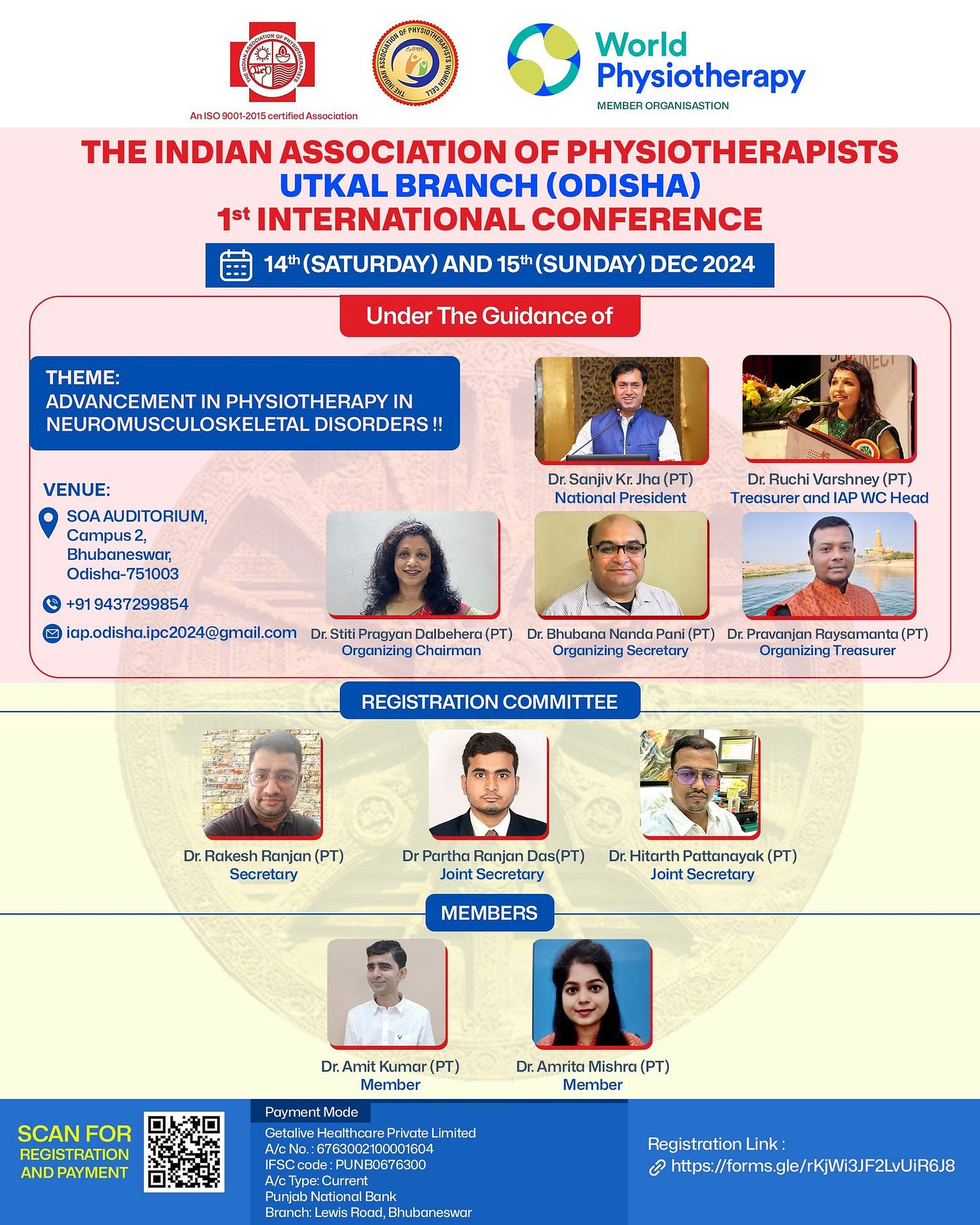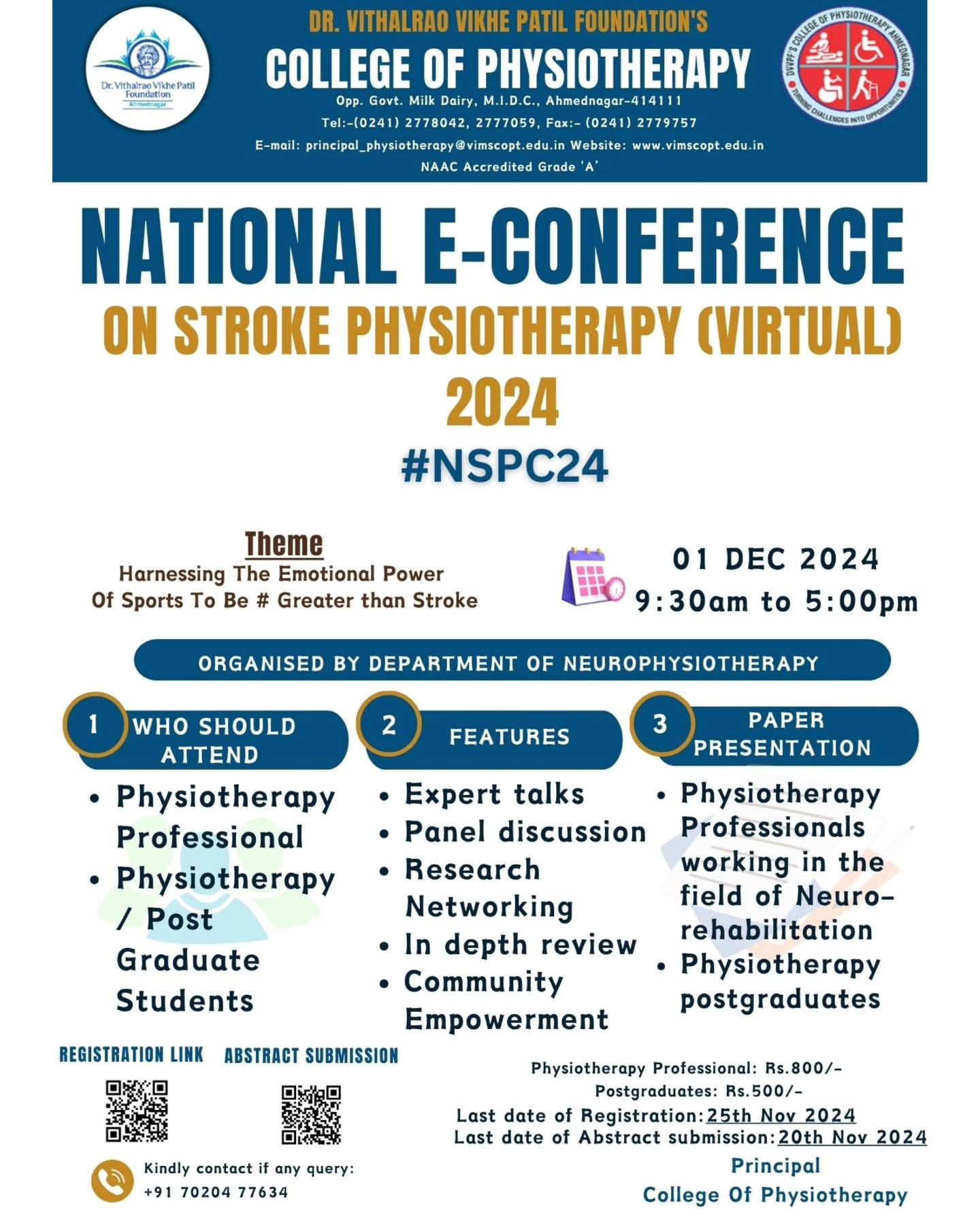Heart Fit: Power Up Your Cardio with Physiotherapy
Physiotherapy Post | Vol. 2, Issue 49 | November 2024
Dear Readers,
Welcome to Physiotherapy Post!
This month, we’re excited to bring you Heart Fit: Power Up Your Cardio with Physiotherapy — a fresh look at how physiotherapy can boost your heart health and stamina. Whether you’re building endurance, managing a cardiac condition, or simply aiming for a stronger heart, this issue offers practical, heart-focused insights to keep you motivated and moving.
Dive in to discover simple, effective ways to strengthen your heart and power up your cardio journey with physiotherapy. Here’s to a healthier, stronger you!
Warmly,
Dr. Aditi Singh, PhD
Editor, Physiotherapy Post
Cardiac health is foundational to overall wellness, and with the right approach, physiotherapy can be a powerful ally in strengthening the heart, improving cardiovascular endurance, and enhancing recovery. This issue dives into evidence-based physiotherapy protocols and exercises designed specifically for cardiac health. From understanding the physiological benefits of targeted exercises to exploring safe, progressive workout plans, this article provides a structured approach to heart-focused fitness through physiotherapy.
1. Understanding Cardiac Physiotherapy
Cardiac physiotherapy focuses on exercises and therapeutic techniques to improve cardiovascular function, reduce symptoms, and boost overall stamina. It’s a critical component of cardiac rehabilitation for those with heart conditions such as coronary artery disease, heart failure, or post-cardiac surgery recovery. Even those without heart disease can benefit by reducing risk factors like hypertension and promoting optimal heart health.
Evidence-based Benefits:
Improved Oxygen Utilization: Aerobic and resistance exercises increase the efficiency of the heart and lungs in using oxygen.
Reduced Blood Pressure and Cholesterol: Regular cardiovascular-focused exercise helps lower high blood pressure and reduce LDL cholesterol, both major risk factors for heart disease.
Enhanced Vascular Health: Improved circulation and reduced vascular stiffness contribute to a lower risk of cardiac events.
2. Evidence-Based Cardiac Exercises
Here is a list of evidence-based exercises often recommended in cardiac physiotherapy protocols. These exercises are typically divided into aerobic, resistance, and flexibility components.
A. Aerobic Exercise
Aerobic exercises increase heart rate and improve oxygen delivery, making them a core part of cardiac rehabilitation.
Sample Exercises:
Brisk Walking: Walking at a brisk but comfortable pace (50-70% of maximum heart rate) is low-impact and suitable for most individuals. Studies show that walking reduces mortality risk in heart patients by 30%.
Cycling: Low-intensity cycling is highly effective for heart health, helping to build endurance and improve vascular function. Gradually increasing duration helps improve stamina safely.
Swimming and Water Aerobics: Low-impact and suitable for those with joint issues, these exercises help with whole-body conditioning without putting strain on the heart or joints.
Protocol: Start with 15-20 minutes per session, three days a week, gradually increasing to 30 minutes, five times a week as tolerated. Keep intensity at a moderate level, where talking is possible but challenging (known as the “talk test”).
B. Resistance Training
Incorporating light to moderate resistance exercises twice a week has been shown to enhance cardiovascular health by reducing body fat, improving blood pressure, and supporting muscle endurance.
Sample Exercises:
Wall Push-Ups: Stand facing a wall, lean forward slightly, and push yourself away in a controlled motion. Wall push-ups are low-stress on the heart and can be modified to increase intensity.
Seated Leg Extensions: While seated, slowly extend each leg straight out and hold briefly, then lower. This exercise can help improve circulation and leg strength without significant strain.
Theraband Exercises: Light resistance bands are effective for performing bicep curls, shoulder raises, and rowing motions, each of which strengthens the upper body safely.
Protocol: Aim for 1-2 sets of 10-15 repetitions for each exercise, twice per week. Keep weights light (1-5 kg) to avoid overstraining.
C. Flexibility and Breathing Exercises
Flexibility and controlled breathing exercises help reduce stress and improve circulation, making them ideal for cardiac patients.
Sample Exercises:
Static Stretching: Focus on stretching major muscle groups (hamstrings, quadriceps, shoulders, and back) to improve flexibility and decrease muscular tension.
Diaphragmatic Breathing: Also known as belly breathing, this technique helps reduce blood pressure and slows the heart rate.
Yoga-Based Stretches: Gentle yoga stretches like Cat-Cow, Child’s Pose, and simple seated twists can enhance flexibility and relieve muscle tension.
Protocol: Incorporate flexibility exercises daily for 5-10 minutes and practice diaphragmatic breathing for 5 minutes at the start and end of each session.
3. Physiotherapy Protocol for Cardiac Health
An effective cardiac physiotherapy protocol is designed to be gradual, with progressive intensity increases over time. Here’s a 6-week evidence-based protocol that integrates aerobic, resistance, and flexibility exercises, gradually building endurance and strength.
4. Safety Tips for Cardiac Physiotherapy
Monitor Heart Rate: Use a heart rate monitor to ensure you remain within a safe range (50-70% of your maximum heart rate).
Stay Hydrated: Dehydration can strain the heart; drink water before and after exercise.
Watch for Warning Signs: Stop immediately if you experience dizziness, chest pain, or shortness of breath.
Warm Up and Cool Down: Spend 5-10 minutes warming up and cooling down to prevent blood pressure spikes and muscle strain.
5. Benefits of Cardiac Physiotherapy
Improved Quality of Life: Research shows that regular physiotherapy exercises improve mood, reduce anxiety, and elevate overall well-being.
Reduced Mortality and Rehospitalization Rates: Studies indicate that cardiac rehabilitation programs reduce hospital readmissions by up to 31%.
Enhanced Functional Capacity: Improved endurance allows for more daily activities without fatigue, contributing to a greater sense of independence.
With the right guidance, physiotherapy can make a remarkable difference in cardiac health, helping patients and fitness enthusiasts alike build a resilient, strong heart. Heart Fit: Power Up Your Cardio with Physiotherapy is your blueprint for achieving heart health through structured, safe, and effective exercise. Remember, always consult with a healthcare professional before beginning any exercise program, especially if you have a pre-existing heart condition. Embrace the journey toward a healthier heart, and let physiotherapy empower your cardiovascular fitness.
Recent Advancement:
The Added Value of a Behavioral Medicine Intervention in Physiotherapy on Adherence and Physical Fitness in Exercise-Based Cardiac Rehabilitation (ECRA): A Randomised, Controlled Trial
Borg, S., Öberg, B., Nilsson, L., Söderlund, A., & Bäck, M. (2020). The added value of a behavioral medicine intervention in physiotherapy on adherence and physical fitness in exercise-based cardiac rehabilitation (ECRA): a randomised, controlled trial. Patient preference and adherence, 2517-2529.
Purpose
Exercise-based cardiac rehabilitation (exCR) offers notable health benefits, yet adherence remains low among patients with coronary artery disease (CAD). This study aimed to evaluate the adherence and effectiveness of a behavioral medicine intervention in physiotherapy (BMIP) combined with standard exCR care, focusing on the primary outcome of physical fitness, compared to standard exCR alone.
Patients and Methods
This randomized controlled trial involved 170 CAD patients (136 men), with a mean age of 62.3 years, treated at a Swedish university hospital. Participants were randomly assigned to receive either routine exCR care (RC) or a combination of BMIP and routine exCR care, for a duration of four months, followed by a long-term evaluation at 12 months. Outcomes assessed included submaximal aerobic exercise capacity, muscle endurance, and self-reported levels of physical activity and physical fitness.
Results
At the four-month assessment, both groups showed improvements in all measured outcomes, though the changes between the two groups were not statistically different. Adherence to exCR was higher in the BMIP group compared to the RC group (31% vs. 19%), with a slight, non-significant trend towards sustained submaximal aerobic exercise capacity in the BMIP group over time, while the RC group exhibited signs of decline.
Conclusion
Both interventions led to significant improvement at the four-month mark. The 12-month follow-up revealed a non-significant trend suggesting potential long-term benefits in exercise capacity and adherence for the BMIP group over RC alone. However, further research is necessary to clarify how BMIP may enhance adherence within exCR programs.
News update:
1. Does your heart heal after you quit smoking? Study warns…
Read more at: Link
2. Sugar restriction in early childhood can cut diabetes risk by 35%: Journal
Read more at: Link
3. World Stroke Organization Launches Global Coalition to Drive Action on Stroke Care
Read more at: Link
Upcoming event/s:
#Post-Conference Workshops
A grand opportunity for a knowledge & skill enhancing experience. A call to all Physios to join in huge numbers.
2.
Thought of the Week:
If you have any questions or would like more personalised advice, feel free to reach out to our expert team at dr.aditisingh05@gmail.com.
Wishing you a vibrant and pain-free times ahead!
Warm regards,
Team Physiotherapy Post


















